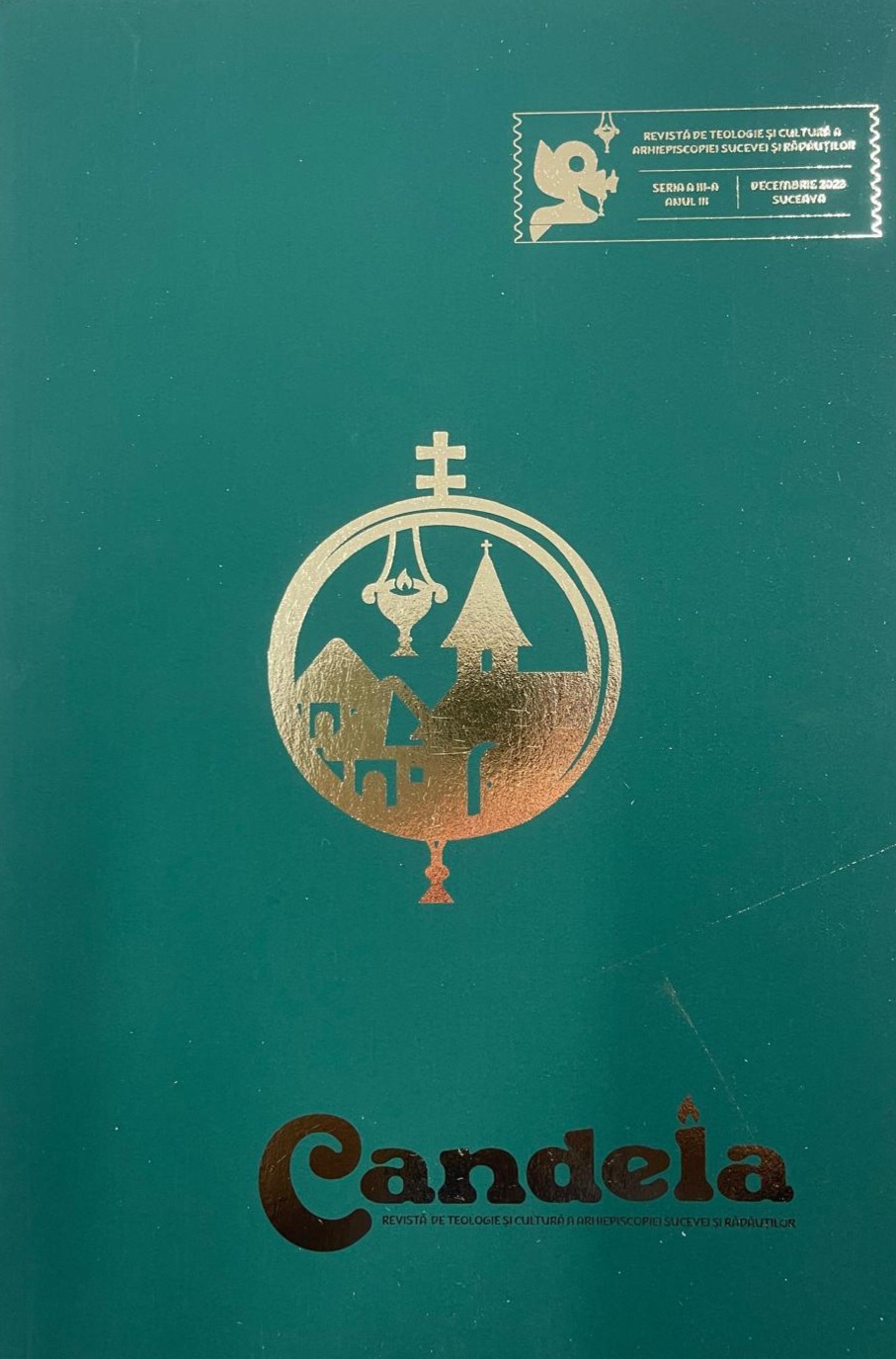Rugăciuni procesionale, mișcări, formule și gesturi liturgice uitate în Liturghia cuvântului bizantină
Processional prayers, movements, formulas and Liturgical gestures forgotten in the Byzantine Liturgy of the Word
Author(s): Gabriel-Alin PișteaSubject(s): Christian Theology and Religion, History of Church(es), Theology and Religion, Eastern Orthodoxy
Published by: Editura Crimca
Keywords: Divine Liturgy; St. Basil the Great; St. John Chrysostom; Liturgy of the Word; liturgical gestures; liturgical movements; prayer; byzantine cult;
Summary/Abstract: After the emigration of judeo-christians in the first Christian century from Jerusalem to parts of Antioch and later to Cappadocia, these became centers of influence for both the aghiopolites and the alexandrians, and later constantinopolitans. Until the end of the fourth century, Antioch and Jerusalem had an identical liturgy structure, but the spread of this form was not in the direct Antioch-Jerusalem line, but the influence passed through Cappadocia, under whose jurisdiction the episcopal see of Jerusalem was located. In the late fourth and early fifth centuries, ministers of the Church in areas under Antiochian or Cappadocian influence became bishops of the capital of Byzantium, taking with them the Liturgy used in these parts.The various liturgical exhortations or gestures that we have today in the Divine Liturgy and about which we could say that some no longer fit into the current historical context, acquiring only a symbolic meaning, in ancient times and, especially, in the flowering era of the Byzantine Empire, had a very definite meaning. The preparation of gifts was done away from the prying eyes of the uninitiated in Skevofilakion or Pastophoria, the small entrance represented a physical procession from outside, from the street or from the Atrium, into the church, and the exit of the different categories of "called" from the church was not just a symbolic gesture, but a real movement. Around these three moments we tried to built this study. By following, without pretending to be exhaustive, the prayers indicating certain movements, the liturgical formulas and gestures that no longer appear today in the printed Missal, we will create an image of the evolution of the Catechumens' Liturgy over time, on this palette of analysis that we have proposed.We encounter differences in the prayers of Prothesis and Enarxa that we highlighted in this study. In St. Basil's, The prayer that the priest makes in Skevofilakion when he places the loaves on the disc is identical to today's Proscomedia prayer. At St. John in Barberini, a different prayer called The Prayer of Presentation of Gifts appears. Then follow, at St. Basil's, the prayers of the three Antiphons, as we have them today in the Missal, which we do not find in the Codexes at St. John. The prayer of entry Master, Lord, our God... and the Prayer of the Trisagion Holy God... appear in Barberini, only at St. Basil, while St. John offers other variants of prayers for the two moments. A common prayer of the studied Masses, which we find in Barberini, but which is no longer retained by the printed Missal, is the Prayer of the Upper Chair, uttered immediately after the Prayer of the Trisagion. We have also tried to give the meaning that today we can give to the ecthenia of catechumens, even if we are no longer in the historical context of the catechumenate period.Why did printed Missals not retain these prayers specific to the Liturgy of St. John, as we see, for example, in the various prayers of the Liturgy of the faithful, but preferred those that appear at St. Basil? The answer to this question we give to the reader in the pages of this study.
Journal: Candela. Revistă de Teologie şi Cultură a Arhiepiscopiei Sucevei şi Rădăuţilor
- Issue Year: 2023
- Issue No: 3
- Page Range: 211-231
- Page Count: 21
- Language: Romanian

